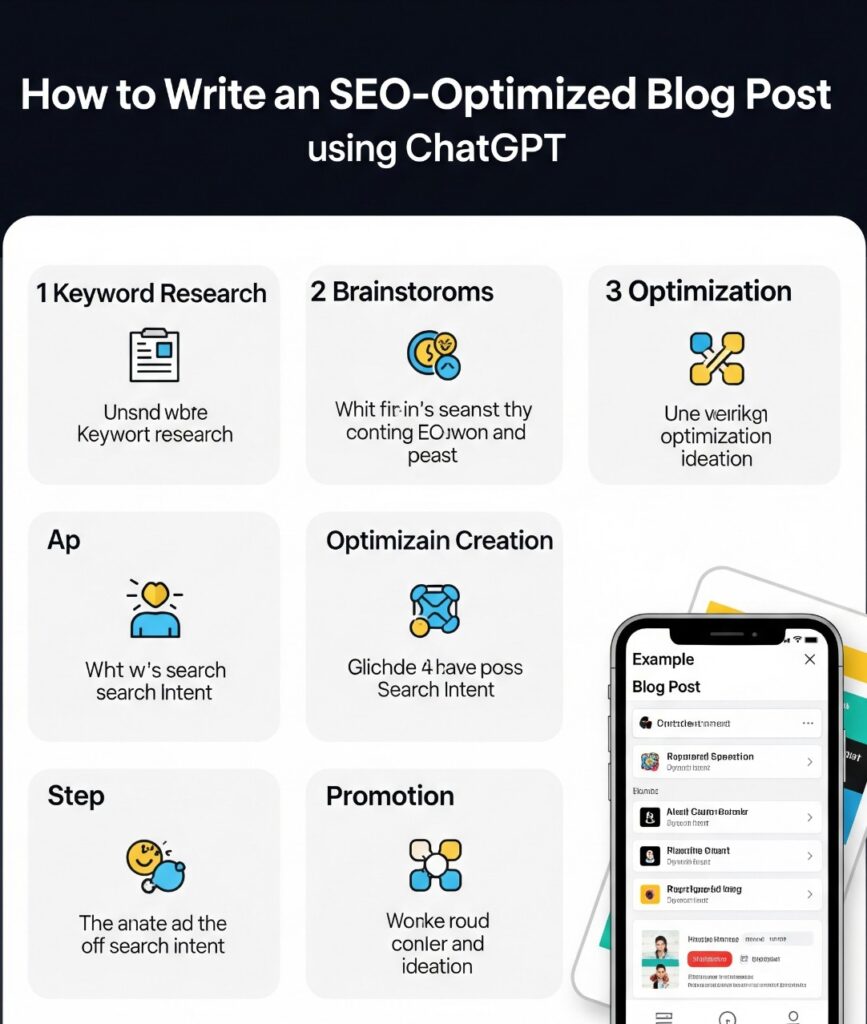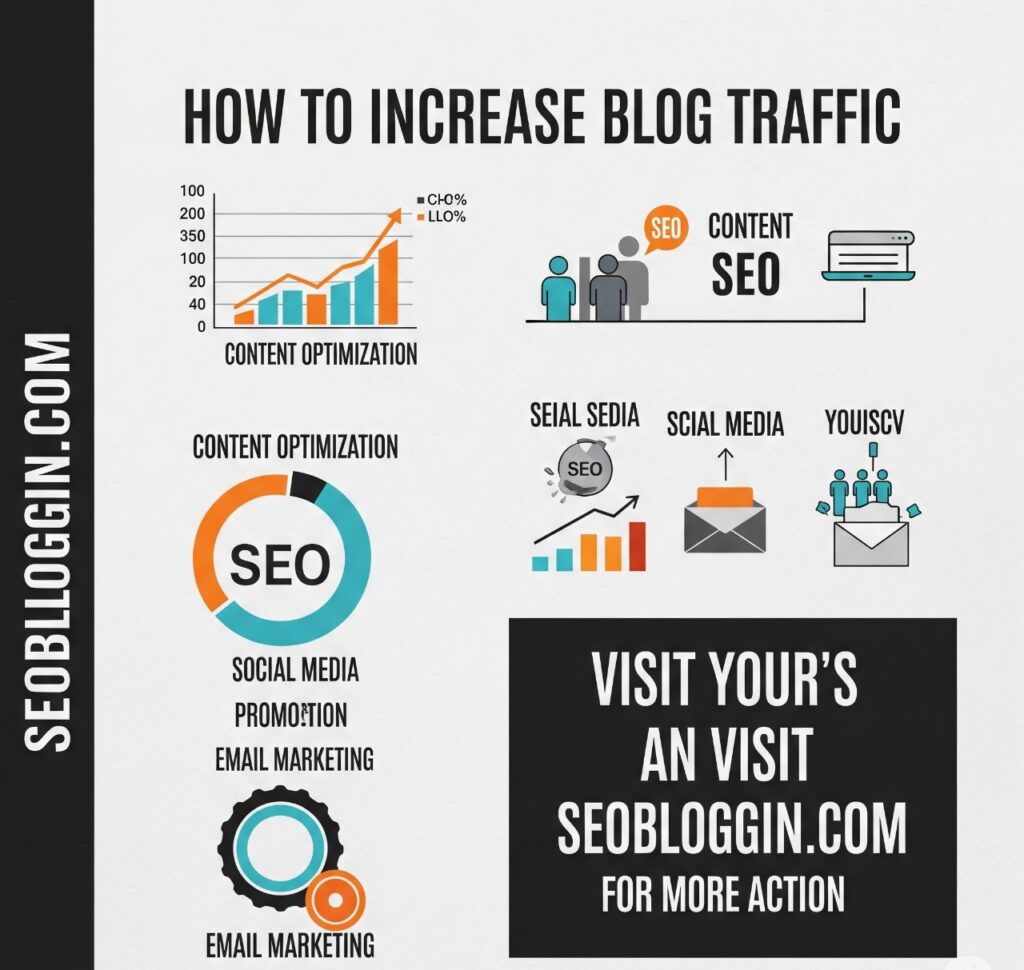Table of Contents
Let’s face it—this platform is no longer just about writing what’s on your mind. In 2025, if you’re not writing SEO-optimized blog posts, you’re practically invisible on Google. This is especially true if you’re into blogging for beginners. But here’s the good news: tools like ChatGPT are making it ridiculously easy to write blog posts that Google loves.
Ready to supercharge your SEO with AI? Let’s uncover the secrets to higher rankings and more traffic.
What is ChatGPT?
ChatGPT is a powerful AI writing tool developed by OpenAI. It can generate content based on the prompts you provide. Whether you need blog outlines, intros, keyword integration, or full-length articles—it’s got your back. Harness the power of artificial intelligence with a variety of ChatGPT tricks to significantly enhance your search engine optimization (SEO) efforts. This versatile tool can be a game-changer for content creators and marketers by streamlining and improving numerous aspects of SEO strategy. From in-depth keyword research and the generation of topic clusters to the creation of compelling, high-quality content, ChatGPT offers a suite of capabilities to elevate your online presence.
For bloggers, especially those who are just starting out, ChatGPT is like having a 24/7 writing assistant.
Why Use ChatGPT for Blogging?
If you’re new to this platform, you’re probably overwhelmed with writing, editing, SEO, and more. ChatGPT simplifies all of it.
- Saves hours of writing time
- Suggests better titles and headings
- Helps generate high-quality content
- It’s perfect for this platform beginners
SEO Basics Every Blogger Should Know
Before diving into how ChatGPT helps, you need to understand the basics of SEO:
- On-page SEO: Keyword use, title tags, internal links
- Off-page SEO: Backlinks, social shares
- Technical SEO: Page speed, mobile-friendliness
Understanding these concepts will help you communicate better with ChatGPT and use it more effectively.
Setting Up Your Blog for SEO
You can’t write SEO-optimized content if your blog isn’t SEO-friendly.
- Choose a niche that’s profitable and less competitive
- Use a fast-loading and mobile-friendly theme
- SEO plugins Install (Rank Math or Yoast)
- Make sure Google can find your website

Keyword Research Before Writing
Want your post to rank? You need the right keywords. Try:
- Ubersuggest or Google Keyword Planner
- Spy on competitors’ blogs
- Focus on long-tail keywords like how to write an SEO-friendly blog post or how to increase blog traffic
One key trend in 2025: using future-proof keywords like blog SEO checklist 2025 is a smart move!
How ChatGPT Helps You Write SEO-Friendly Blog Posts
This is where the magic happens. ChatGPT can:
- Suggest article titles based on keyword intent
- Provide outlines using H1, H2, H3 formats
- Create keyword-rich, readable paragraphs
- Suggest meta titles and descriptions
It won’t just dump info—it writes it in a way that connects with readers and Google.

Step-by-Step Guide: Writing an SEO Blog with ChatGPT
Mastering Blogs with ChatGPT: Your A-Z Roadmap, Ready to stop guessing and start growing? If you’re looking for a clear, step-by-step path to achieving your goals, our Complete Roadmap is exactly what you need. Click here blog SEO checklist 2025 to discover the proven plan that will guide you from start to finish! One of the most potent applications of ChatGPT in SEO lies in its ability to conduct sophisticated keyword research. By providing a seed keyword, you can prompt the model to generate extensive lists of related long-tail keywords, LSI (Latent Semantic Indexing) keywords, and even frame them as questions that users are likely to ask. This allows for the creation of a comprehensive content plan that targets a wide array of search queries, thereby increasing the potential for organic traffic. Furthermore, ChatGPT can assist in analyzing the search intent behind these keywords, helping to tailor content that directly addresses user needs, whether they are informational, transactional, or navigational.
Step 1: Start with a Prompt
Give a clear prompt like:
“Write a 2000-word blog post on ‘How to Increase Blog Traffic’ using SEO tips.”
Step 2: Let It Generate an Outline
Ask for a structured outline using H1, H2, and H3 tags. This improves readability and SEO.
Step 3: Expand Each Section
Prompt ChatGPT to write full sections using your chosen keywords.
Step 4: Add a Human Touch
Rewrite small portions to match your tone. ChatGPT gets close, but a human touch makes a difference.
How to Naturally Add Keywords
Don’t just stuff your post with keywords. Google hates that. Instead:
- Use keywords like how to write SEO friendly blog posts in the first 100 words
- Sprinkle them throughout H2 and H3 headings
- Add them to image ALT texts, meta descriptions, and the conclusion
Use tools like Surfer SEO or SEOQuake to check keyword density. Want to know how to increase blog traffic and see a real boost in your website visitors? We’ve got the proven strategies you need. Click here to unlock the full guide and watch your traffic soar!
Formatting for Readability
Google loves readable content—and so do readers. Here’s how ChatGPT helps:
- Keeps paragraphs short
- Uses bullet points and subheadings
- Writes in a conversational tone
- Encourages internal linking (linking one post to another)
All this improves dwell time—key for SEO.
Common SEO Mistakes Bloggers Make
Missing meta descriptions: Google won’t know what your post is about.
- Keyword stuffing: Repeating terms can actually hurt your rank.
- No internal linking: Link to related posts to improve your site structure.
- The 70%+ Mobile Miss: Don’t ignore most of your audience.
- No meta descriptions: Google won’t know what your post is about.
ChatGPT can automate and fix most of these issues for you!

How to Increase Blog Traffic Using ChatGPT
More content = more chances to rank. Use ChatGPT to:
- Write multiple posts weekly
- Create content calendars
- Repurpose blog posts into social media, newsletters, and reels
- Target search queries your audience is looking for
The best part? You don’t burn out. Let AI carry the load.
How to Rank a Blog on Google: ChatGPT’s Role
Ranking on Google isn’t magic—it’s a method. ChatGPT helps by:
- Creating topic clusters (e.g., one post on “SEO tips,” another on “link building”)
- Writing content that answers common user questions
- Optimizing for featured snippets (like FAQs and how-tos)
Use schema markup and rich formatting to boost your chances further.
Blog SEO Checklist 2025
Here’s a quick checklist you can follow:
✅ Keyword-rich title & meta description
✅ Mobile-optimized layout
✅ Fast page loading speed
✅ Schema markup
✅ High-quality, AI-assisted content
✅ Internal and external linking
✅ Fresh content updates
✅ Proper H1–H4 usage
✅ Keyword density: 1%–1.5%
Tick these off and your blog is Google-ready. Curious what it takes to dominate Google this year? Our exclusive Blog SEO Checklist 2025 is packed with the latest updates and actionable strategies to get your content to the very top. Don’t fall behind – click here to discover how to future-proof your blog and achieve unbeatable rankings!
Final Tips for Blogging Success
2025 is both an art and a science. Tools like ChatGPT help with the technical part, but you still need authenticity, consistency, and creativity.
- Be real with your audience
- Focus on solving problems
- Update and repurpose old content regularly
- Use ChatGPT smartly—not blindly
Think of AI as your powerful assistant.
Conclusion
Writing an SEO optimized blog post in 2025 doesn’t have to be overwhelming. Thanks to tools like ChatGPT, even this platform for beginners becomes manageable, effective, and honestly—fun.
With the right prompts, keyword strategy, and a human touch, ChatGPT can help you create blog content that not only ranks but also connects. Beyond keyword research, ChatGPT excels at content creation and optimization. It can generate well-structured article outlines, complete with headings and subheadings, that are optimized for target keywords. The model can also be used to write entire articles, blog posts, and other forms of web content. While it is crucial to edit and fact-check AI-generated content to ensure accuracy and maintain your brand’s voice, ChatGPT provides a powerful starting point that can drastically reduce content creation time.
So what are you waiting for? Open ChatGPT and start crafting your next ranking blog!
FAQ’s –
1. How can beginners use ChatGPT?
Start by asking ChatGPT to create outlines or write blog sections based on your topic. It’s beginner-friendly and saves tons of time.
2. Is ChatGPT enough to write ranking content?
It’s a great starting point. Combine its output with proper SEO strategies, keyword research, and a human review to rank well.
3. How often should I update blog content?
Every 3–6 months. Refresh content, fix broken links, and add new keywords to stay relevant in 2025.
4. Can ChatGPT do keyword research, too?
ChatGPT can suggest keywords based on your topic, but for detailed SEO research, use tools like Ubersuggest or Ahrefs.
5. What’s the ideal blog post length in 2025?
1,500–2,500 words is the sweet spot for evergreen, SEO-rich content.

